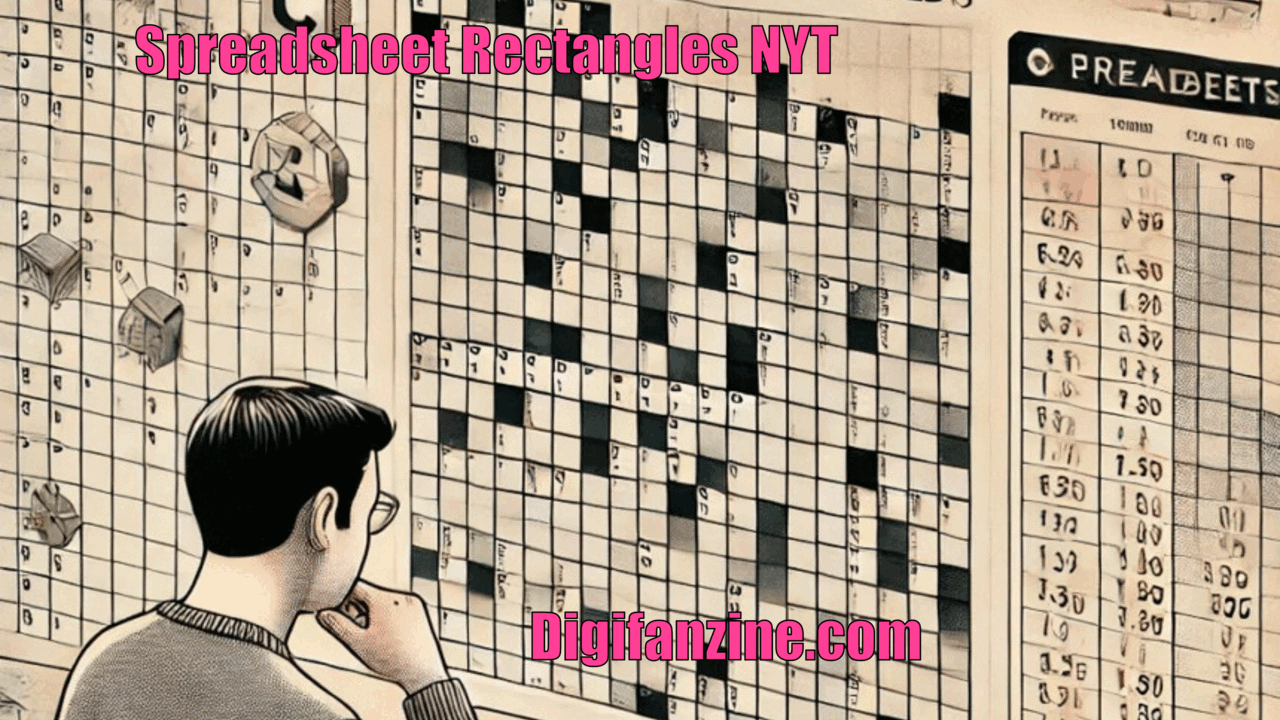Understanding the Enigma: Spreadsheet Rectangles NYT
The term “Spreadsheet Rectangles NYT” presents an intriguing puzzle. While the concept of spreadsheets and rectangles within them is well-established, the connection to the New York Times (NYT) remains to be discovered. There may be a misunderstanding, a misremembered reference, or perhaps a novel application of spreadsheet technology within the realm of journalism that has yet to be widely recognized.
Let’s delve into the core concepts to shed light on the potential meanings behind this term.
Spreadsheet Rectangles: The Building Blocks of Data
A spreadsheet, at its essence, is a digital grid composed of rows and columns. The intersection of a row and column forms a cell, the fundamental unit for storing data. A group of adjacent cells forming a rectangular shape is commonly referred to as a “spreadsheet rectangle.” These rectangles serve as containers for organizing, analyzing, and manipulating data efficiently.
- Data Tables: Creating structured tables for numerical or textual information.
- Charts and Graphs: Generating visual representations of data within defined areas.
- Data Analysis: Applying formulas and functions to specific data ranges for calculations and insights.
- Conditional Formatting: Applying visual rules to highlight particular data patterns within rectangles.
NYT and Data: A Potential Connection
Given the New York Times’ reputation for data-driven journalism, it’s plausible that there might be a link between spreadsheets and the publication, even if not explicitly labelled “spreadsheet rectangles NYT.” The newspaper’s investigative reporting often involves extensive data analysis, which heavily relies on spreadsheet tools.
Possible scenarios include:
- Behind-the-Scenes Data Management: NYT journalists might utilize spreadsheets to organize and clean large datasets before analysis or visualization.
- Interactive Data Visualizations: The newspaper could employ spreadsheet-based tools to create interactive graphics or data-driven stories accessible to readers.
- Data-Driven Storytelling: Spreadsheet calculations and analysis might underpin narratives presented in articles, providing quantitative support to journalistic claims.
The Missing Piece: Deciphering the NYT Connection
Without concrete evidence or additional context, determining the exact nature of the “spreadsheet rectangles NYT” relationship remains challenging. It’s essential to consider the following possibilities:
- Misinterpretation: The term might be a misremembered or misheard phrase unrelated to the New York Times.
- Specific Project or Initiative: An internal NYT project or initiative could uniquely utilize spreadsheet rectangles but not publicly documented.
- Future Development: The concept might represent a future trend in data journalism, where spreadsheets become more visible in the news-making process.
The Potential of Spreadsheet Rectangles in Journalism
While seemingly mundane, spreadsheet rectangles possess significant potential for journalistic innovation. Beyond their traditional role in data organization and analysis, these rectangular blocks of cells could revolutionize how news is presented and consumed.
Envision interactive articles where readers can dynamically explore data within a spreadsheet-like interface. By manipulating variables and observing outcomes, audiences could gain deeper insights into complex issues. This interactive approach could foster greater engagement and critical thinking.
Moreover, the convergence of natural language processing and spreadsheet technology heralds an era of automated data journalism. Algorithms could identify patterns, trends, and anomalies within vast datasets, generating initial news stories or uncovering potential investigative angles. Such automation would free journalists to focus on higher-level analysis, interpretation, and context-building.
The Future of Spreadsheet Rectangles in Journalism
The full potential of spreadsheet rectangles in journalism still needs to be explored. While the connection between this term and the New York Times remains speculative, it underscores the growing importance of data-driven storytelling. As news organizations increasingly rely on data to inform their reporting, tools like spreadsheets will become indispensable.
The future holds promise for innovative applications of spreadsheet rectangles in journalism. From interactive data visualizations to automated news generation, these rectangular constructs could reshape the media landscape. As technology continues to advance, the role of spreadsheets in newsrooms is likely to expand, making the term “spreadsheet rectangles” a more familiar and significant concept in the industry.
Conclusion: A Call for Further Exploration
While the term “spreadsheet rectangles NYT” presents an enigma, it underscores the growing importance of data in journalism and the versatile nature of spreadsheets. As technology continues to evolve, we can expect to see even more innovative applications of spreadsheets in the news industry.
FAQs
What are spreadsheet rectangles?
Spreadsheet rectangles are groups of adjacent cells in a spreadsheet, forming a rectangular shape.
Why are spreadsheet rectangles necessary?
They are essential for organizing, analyzing, and visualizing data efficiently.
Is there a confirmed connection between spreadsheet rectangles and the NYT?
There is no concrete evidence of a direct link between the two at this time.
Could the NYT use spreadsheet rectangles in its reporting?
The Nlikelylizes spreadsheets for data management and analysis in its journalistic work.
Also Read:







